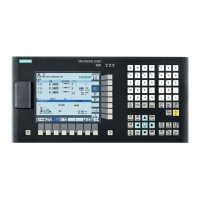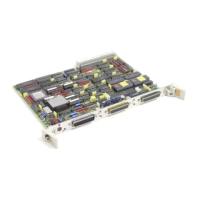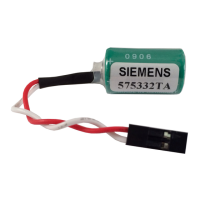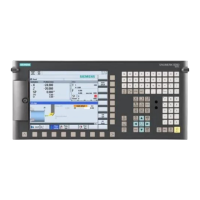Cycles
9.10 Shoulder plunge-cutting – CYCLE412
Cylindrical grinding
Programming and Operating Manual, 07/2009, 6FC5398-4CP10-2BA0
181
9.10 Shoulder plunge-cutting – CYCLE412
Programming
CYCLE412(N_SITZ, Z_SCH, X_ST, B_ART, A_LU, A_SR, A_SL, F_SR, F_SL, TIME, KS,
F_KS, OSW, F_OSCILL, UWERK)
Parameter
Table 9- 6 Parameters of CYCLE412
Parameter Data type Meaning
N_SITZ INT Seat number
Z_SCH REAL Shoulder dimension in Z (abs.)
X_ST REAL Starting position in X (abs.)
B_ART INT Machining type:
1=roughing
2=finishing
3=roughing+finishing
A_LU REAL Air allowance (incr.)
A_SR REAL Roughing allowance (incr.)
A_SL REAL Finishing allowance (incr.)
F_SR REAL Feedrate for roughing
F_SL REAL Feedrate for finishing
TIME REAL Sparking-out time (s)
KS INT Acoustic emission sensor Yes=1/No=0
F_KS REAL Feedrate for air grinding [mm/min]
OSW REAL Reciprocation travel (incr.)
F_OSCILL REAL Reciprocation speed [mm/min]
UWERK REAL Workpiece peripheral speed [m/min]
Function
The shoulder plunge-cutting cycle can be used to machine a workpiece shoulder by plunge-
cutting in the Z direction. The direction depends on the cutting edge used (refer to "Tools and
Tool Radius Compensation")
Shoulder plunge-cutting involves only roughing and finishing.
An acoustic emission sensor can be used to bridge the distance between the starting point
and the actual workpiece surface within an optimum time by sparking.
Parallel to the grinding process, a short-travel reciprocation can be activated in the X
direction via reciprocation commands.
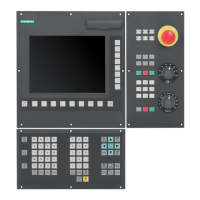
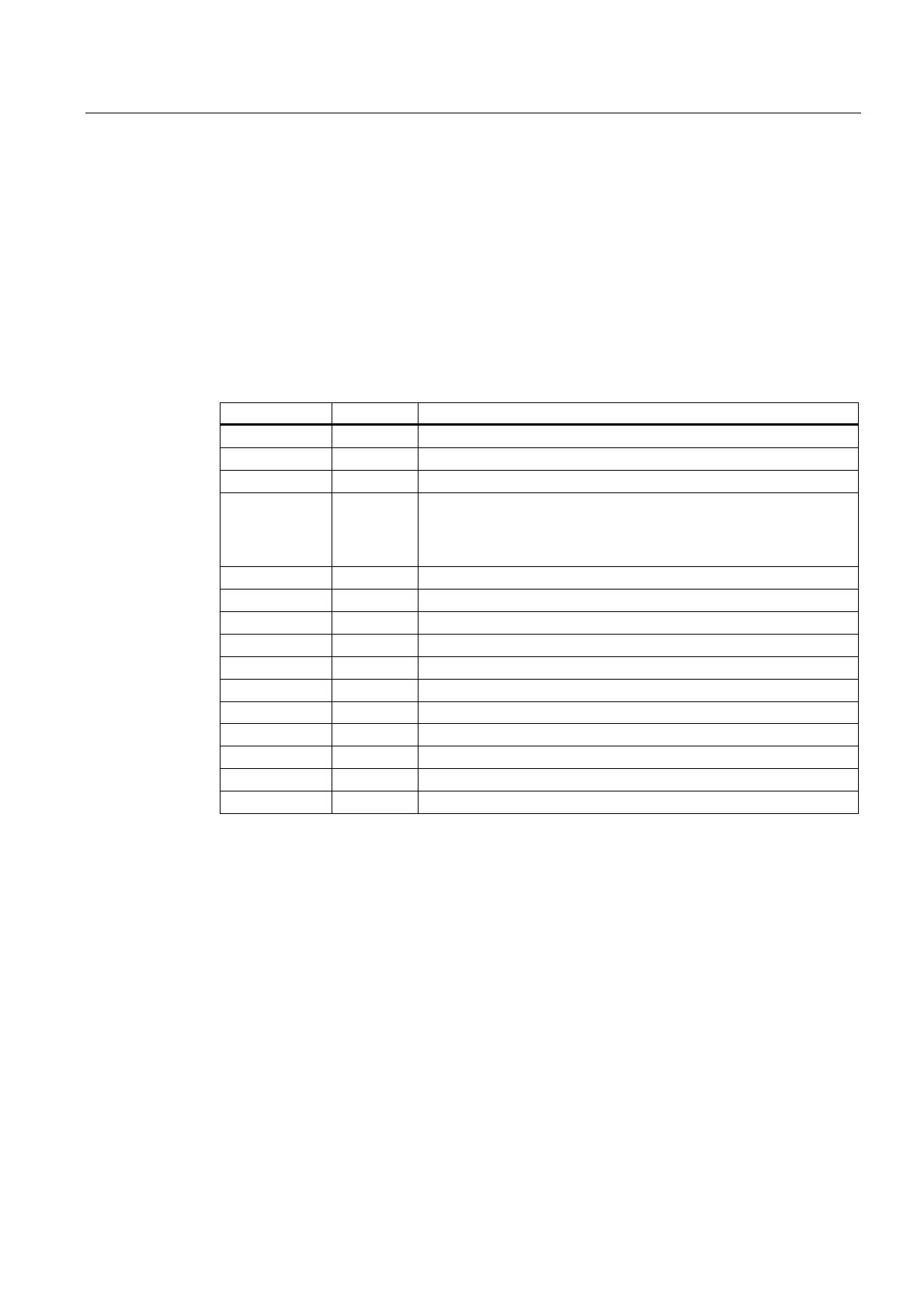